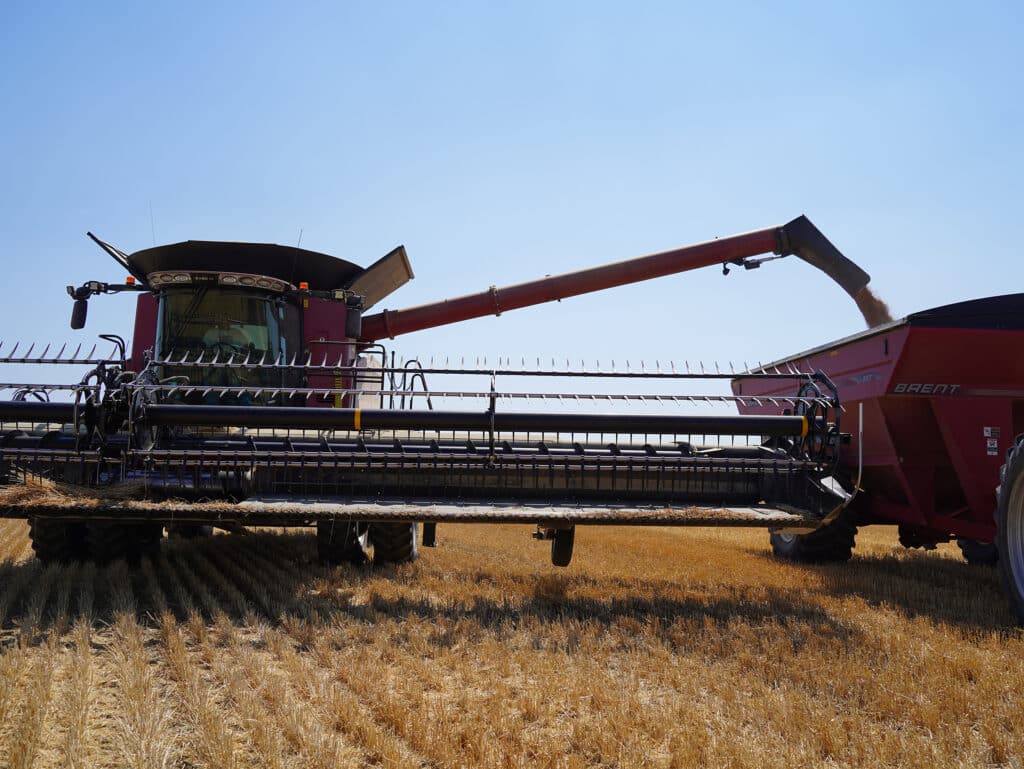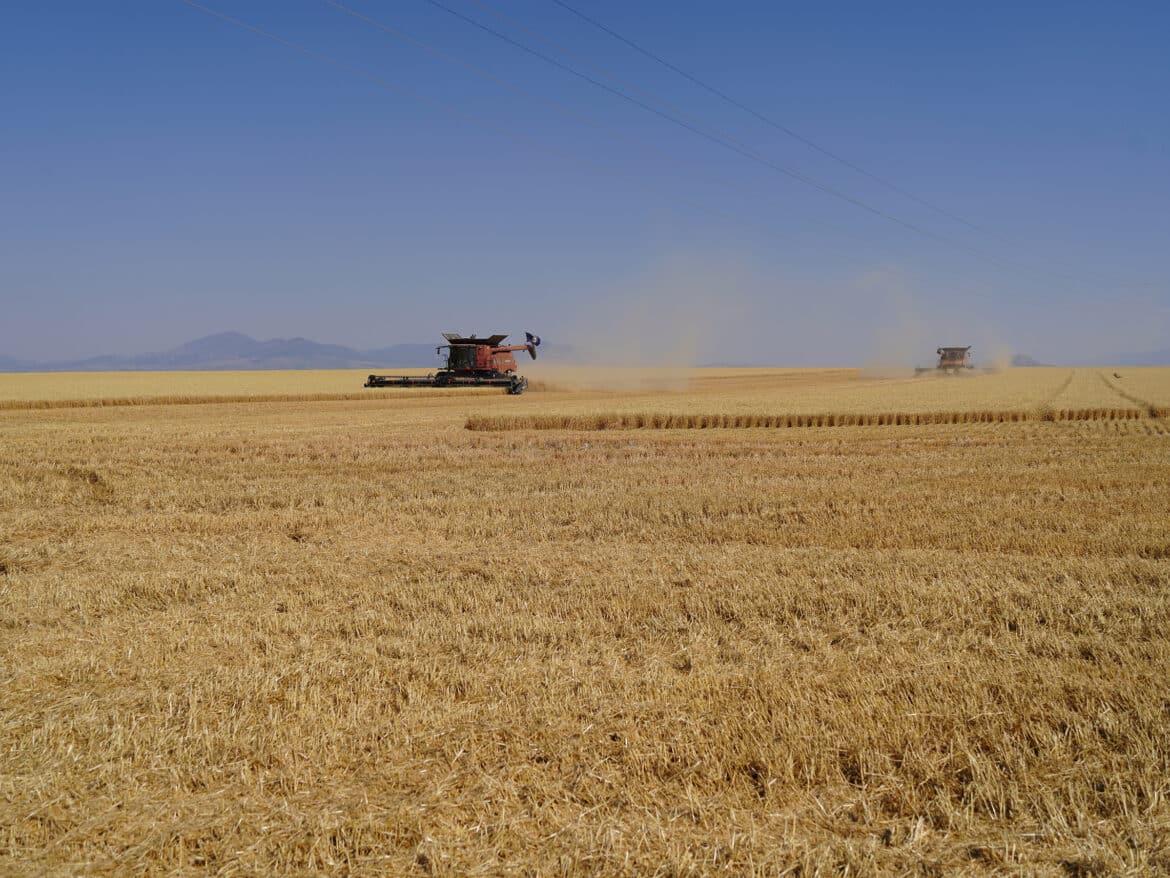Great Falls, MT – Montana harvest has been fast and furious for 2024, with hot temperatures pushing wheat, peas and other crops to rapidly ripen. Montana Wheat & Barley Committee staff have been out with producers and are sharing numbers as winter wheat pours into the bin at an accelerated pace.
“We are hearing from the Billings region to north of Great Falls that yields are anywhere from 40 to 85 bushels per acre, with some anomalies like 120,” said Lori Wickett, research and communications director. “There are some erratic results out there. Some producers have unusually high yields on one field, then they’ll move to another and find considerably lower bushels. Most seem happy with their yields so far, with some trepidation about their protein.” Growers report test weights remaining consistently above 60 pounds, with protein counts averaging lower than normal at half a point or a full point lower than Montana’s typical 11.8 average.
“Montana is rarely a homogenous crop,” said Kent Kupfner, executive director. “The industry will have to sort through the differences and they’ll make it work. But the fact that protein scales for winter wheat are 15-a-half down means that if you bring a 10-0 protein count to town, that’s a 45 cent discount which causes a lot of consternation.” Kupfner continued, “The commercial grain guys are saying, ‘How do I handle these lower proteins?’ while the producer is trying to decide, ‘Do I bin it or do I take that kind of discount?’”
“June was flat favorable for the winter wheat crop. While it wasn’t overly wet, it was cool and I think the wheat responded to that moderate temperature,” Kupfner noted. Cooler temperatures helped winter wheat accommodate for the lower moisture levels much of Montana received.
Producers believe that the late frosts in June might be the thief who stole the higher protein from this year’s wheat crops. Winter wheat was just starting to form its head, nestled in the boot of the plant, when 30 degree nights set records in some Montana regions. “Growers are saying they believe it impacted protein. They have no other variables outstanding, so there really is not any other reason that would make sense,” Wickett said.
Kupfner predicts that the winter wheat crop will average around 50 bushels/acre, nearly the same as 2023’s record breaking crop. Spring wheat and durum harvest is just starting to come in, but not enough to talk about.

“Since July 8, Montana has been hot and windy,” he said. “There is just no way that has been good. Funny enough, the National Agricultural Statistics Service (NASS) ratings haven’t dropped near as much as I would’ve guessed.” Spring wheat averaged 30 bushels/acre in 2023 while NASS is predicting a 35 bushel average for 2024. “I hope it’s there,” Kupfner said. “If it is, it’s because of farming practices, timely rains and improved varieties. But you can’t deny how hot and dry July was.”
For the south central and central parts of Montana, grasshoppers and wheat stem sawfly have been noticeably less. “No one is complaining, but everyone is curious about why,” Wickett said. “If frost had something to do with it, that was a fortunate outcome. But if those cold temps were the culprit for protein, then that’s not good. It’s a bit of a cancel effect.” Eastern Montana continues to suffer losses to grasshopper infestations.
MWBC communicates on a weekly marketing video call where wheat states swap statistics and discuss conditions to help U.S. Wheat Associates prepare to market the current crop. “I just talked to a spring wheat trader in Portland,” Kupfner said. “He was hopeful about our northeast corner being of better condition than I thought it would be — he threw out 38 bushel average. If we can cut that for spring wheat, it will be a victory.” Growers are just beginning to cut spring crops including spring wheat, barley and durum.
For more information regarding the Montana Wheat & Barley Committee, email wbc@mt.gov or call 406-761-7732.
###


